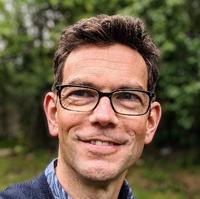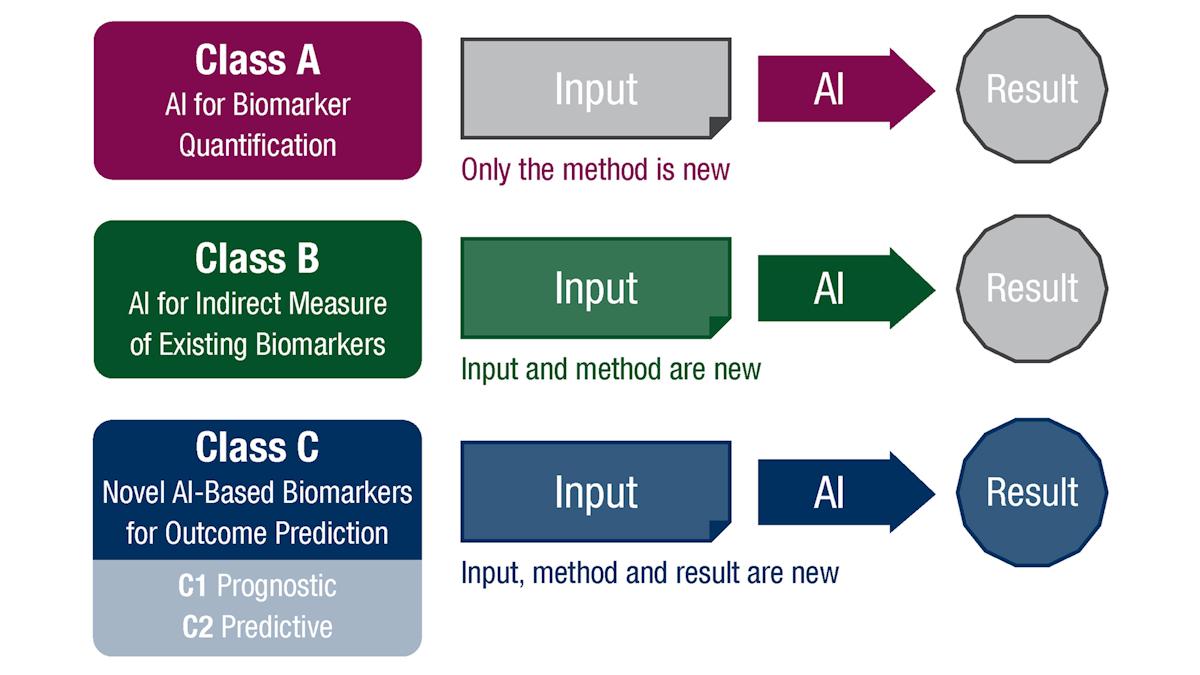Inside ESMO 2024: Treatments, trials, and top HCPs on social media

Just over a week after Madrid welcomed thousands to discuss the latest developments in endocrinology at EASD 2024, Spain also took the lead on oncological proceedings this September, playing host to the European Society for Medical Oncology (ESMO)’s 2024 Congress. An estimated 34,000 descended on Barcelona to learn more about the latest progress in trials, treatments, and wider research in the cancer space.
Throughout the congress, healthcare professionals (HCPs) from around the world used social media to share their reactions to the latest data, amplifying the reach of new science all over the world.
We tracked the online conversations of these HCPs on X (formerly Twitter). In total, this manifested in 15,755 posts by 1,673 individual HCPs. We also monitored the social media activity and influence of the 28 ESMO Ambassadors, who kept their followers abreast of the latest scientific advancements at ESMO by posting collectively 1,710 times across X and LinkedIn.
Within these conversations, healthcare professionals and ambassadors discussed and shared details on a range of topics, including the latest treatments, trials, and innovations that are shaping the future of oncology.
How conversation evolved
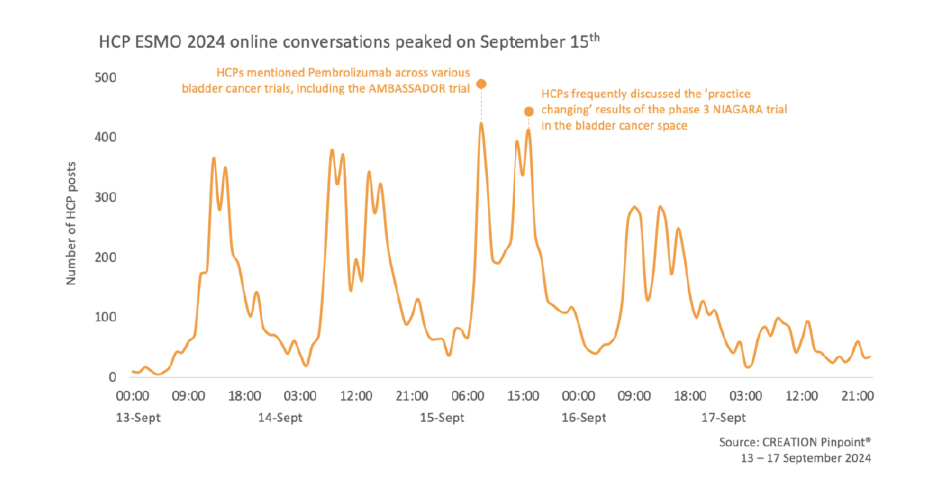
The levels of conversation among healthcare professionals spiked at various moments during the Congress, as attendees reacted in real time to the latest trial results and oral presentations that featured throughout.
The most significant spike in conversation occurred on 15th September, the third day of ESMO, where HCPs used social media to amplify data from a variety of bladder cancer trials that had been presented. In particular, HCPs posted about the AMBASSADOR study, which assessed disease free survival rates and metastatic disease recurrence patterns in patients with muscle-invasive urothelial carcinoma treated with pembrolizumab versus observation. HCPs used social media to highlight the “impressive results” of the trial, and noted the findings’ impact in supporting pembrolizumab as an effective adjuvant treatment option for patients with the disease.
Shortly after, conversation spiked again as HCPs reacted positively to the phase 3 results of AstraZeneca’s NIAGARA trial. The results were discussed by 74 HCPs in 117 posts. The trial itself assessed the impact of durvalumab, in combination with cisplatin and gemcitabine, on patients with muscle-invasive bladder cancer. Dr Neeraj Agarwal described the results as “practice changing”, while Dr Toni Choueiri praised the data for providing a new standard of care in the disease space.
Most mentioned cancer types, treatments, and trials
Through an analysis of the social media conversations of HCPs, we were also able to identify the cancer types that attracted the most attention online. Through the conference, we found genitourinary (GU) cancer was the most-discussed among HCPs, accounting for 12% of the entire online conversation between the 13th and 17th of September. A post by ESMO Ambassador Petros Grivas’ praised the “huge strides” being made in the GU cancer space following the results of various trials presented at the Congress, such as AMBASSADOR.
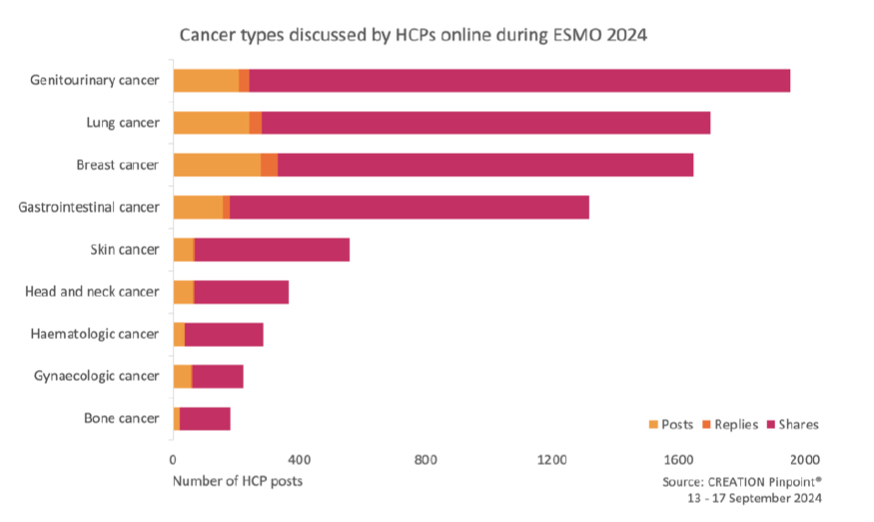
Lung cancer was the second most discussed cancer type among HCPs during ESMO, appearing in more than 1,600 posts. Much of this conversation (253 posts) revolved around the ADRIATIC trial. HCPs particularly emphasised the progression-free survival benefits that durvalumab demonstrated in patients with limited-stage small cell lung cancer.
In the non-small cell lung cancer (NSCLC) space, ESMO Ambassador Antonio Passaro drew attention to the “promising [overall survival] trend” in the results of the MARIPOSA-2 study, which assessed the progression-free survival benefits of amivantamab plus chemotherapy in patients with NSCLC. Similarly, other HCPs highlighted the “promising activity of NVL-655” demonstrated in the ALKOVE-1 trial, presented during the Congress.
Despite being the third most-discussed cancer type in overall HCP conversations, breast cancer mentions actually included the largest number of original HCP posts. In these, healthcare professionals attending ESMO posted about data from the 4-year outcomes of the NATALEE trial, which highlighted the long-term benefits of adjuvant ribociclib in early breast cancer. 16 HCPs also used their platforms to share news of the FDA’s approval of the drug in combination with an aromatase inhibitor (AI) for the treatment of HR+/HER2 early breast cancer, following the trial results.
As we often find in our analyses, particular individual posts attracted significant amounts of engagement among HCPs on social media during ESMO. Most often shared among HCPs were posts that linked to the New England Journal of Medicine (NEJM). In fact, the top three posts shared most frequently by HCPs during ESMO were originally posted by NEJM and highlighted key findings from several of the most significant new trials in the oncology space, including AMBASSADOR (the post shared by 77 HCPs), NIAGARA (shared by 66 HCPs) and ADRIATIC (shared by 48 HCPs).
In addition to NEJM, HCPs also frequently shared links to sites such as UroToday and OncoAlert, which provided further summaries and coverage of the congress.
Key voices during ESMO 2024
Our analysis also enabled an identification of those healthcare professionals most active and influential on social media as the Congress progressed. The most active HCP during ESMO was Dr Gil Morgan a clinical oncologist and director of the OncoAlert network. Across the five days, Morgan reposted 857 posts, positioning him as a major amplifier of online HCP conversations during the conference. His average reach per post stood at more than 6,000.

Dr Gilberto Lopes, who ranked second for the volume of posts through the Congress, had the highest average reach per post, tallying more than 10,000.
Six of the top eight most active HCPs were from the US, with the exceptions being Dr Lorenza Rimassa, Associate Professor of Medical Oncology at Humanitas University in Italy, and Dr Paulo Bergerot, a medical oncologist based in Brazil. Two of the eight most active HCPs, Drs Petros Grivas and Lorenza Rimassa, were ESMO 2024 Ambassadors.
The #ESMOAmbassadors hashtag was used in 1,907 posts on X across the five-day congress. The 28 ESMO Ambassadors themselves posted a combined total of 1,629 times on X and 81 times on LinkedIn, including Drs Vivek Subbiah and Antonio Passaro, who used both platforms to post about their own presentations.
The follower network of these ambassadors was vast - particularly among HCPs. The ambassadors had a total HCP following of more than 26,000. Though many came from the US (48%), the remainder was diverse. 9% were from Spain, 5% from the UK, and 5% from India. Each ambassador proved highly influential among their HCP peers in online conversations during the Congress.
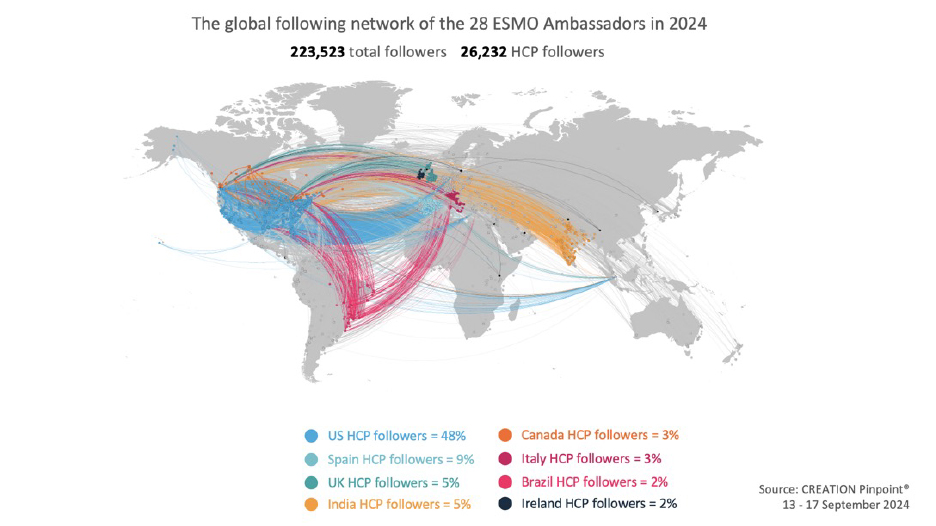
ESMO 2024 brought together a vibrant community of healthcare professionals to discuss the most significant advancements in oncology. In over 15,000 social media posts - by more than 1,600 individuals - healthcare professionals used their online platforms to share their thoughts on the newest and most promising treatments, to digest the latest trial results, and to amplify the most relevant oncology news to a truly global audience.

